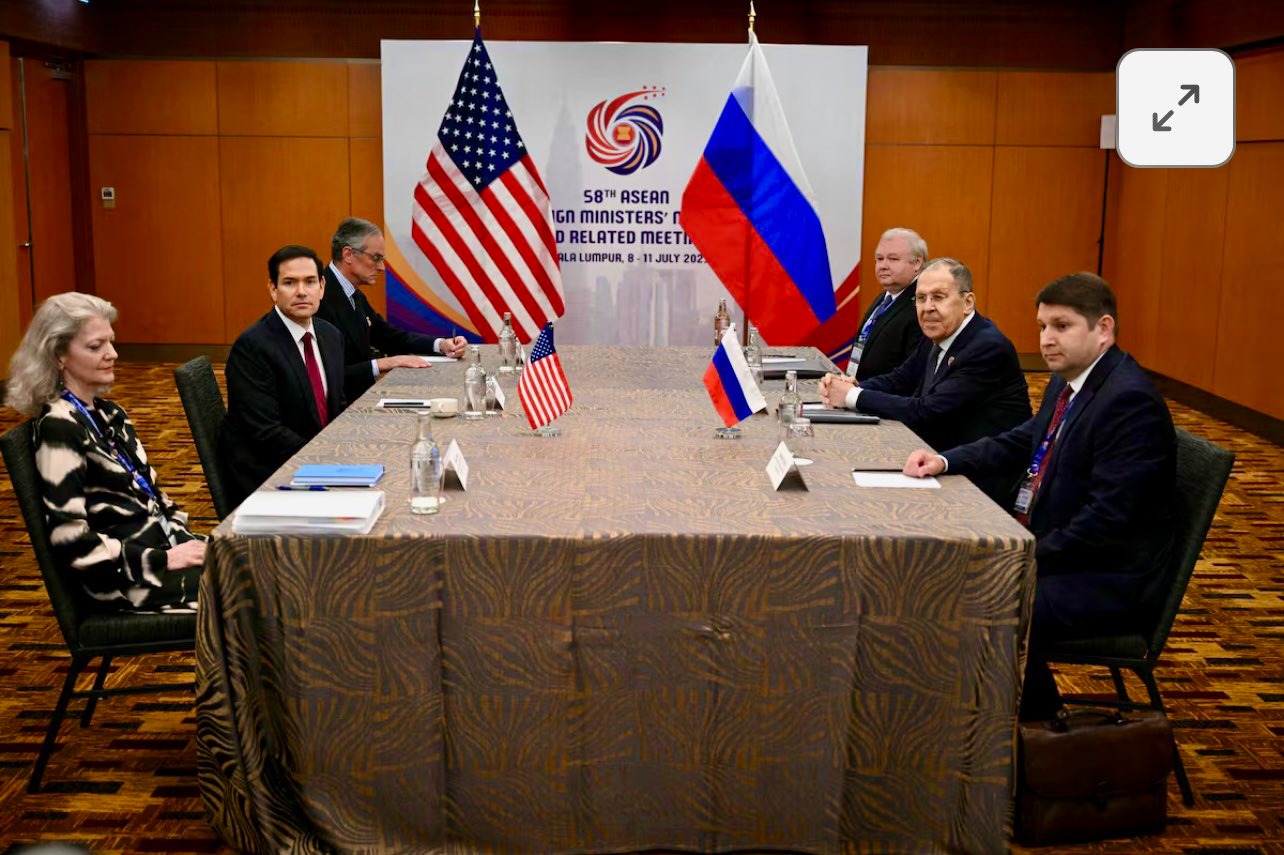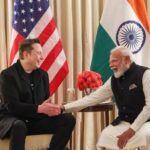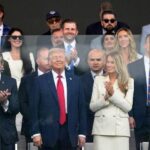Kuala Lumpur, July 10, 2025 — In a development watched closely by global diplomatic circles, U.S. Secretary of State Marco Rubio met Russian Foreign Minister Sergey Lavrov on the sidelines of the ASEAN Foreign Ministers’ Summit in Malaysia on Thursday. The meeting came just hours after Russia launched a second consecutive night of heavy drone and missile attacks on Kyiv, killing at least two civilians and injuring several others.
While the airstrikes deepened tensions between Moscow and the West, Rubio and Lavrov’s face-to-face dialogue signaled a potential — albeit narrow — opening for de-escalation efforts in the ongoing war in Ukraine.
🎯 The Meeting: Diplomacy in the Midst of Chaos
Rubio’s 50-minute closed-door meeting with Lavrov, their second such encounter since February, focused primarily on Ukraine, but also addressed Middle East hotspots like Iran and Syria, as well as the broader state of U.S.–Russia relations.
Rubio reportedly delivered what his aides called a “clear and direct message” outlining U.S. frustration with Moscow’s conduct in Ukraine. Lavrov, for his part, labeled the meeting “constructive” and said Russia remained open to diplomatic solutions, even as tensions escalated on the ground.
“This was a frank, necessary conversation,” Rubio said after the meeting. “We’re under no illusions about Putin’s intentions, but dialogue — even in difficult moments — is part of our responsibility.”
💥 The Kyiv Assault: Timing That Speaks Volumes
The diplomatic exchange unfolded just hours after Russia launched another large-scale drone and missile attack on Kyiv, marking the second consecutive night of bombardment.
- At least two people were killed, and over 20 injured, according to Ukrainian officials.
- The barrage included Iranian-made Shahed drones and multiple cruise missiles.
- The attack damaged residential areas and energy infrastructure, forcing many Kyiv residents to shelter in metro stations overnight.
Ukrainian President Volodymyr Zelenskyy condemned the attacks as an act of “cowardly terror” and urged Western nations to accelerate delivery of air defense systems, including the U.S.-made Patriot batteries.
The attacks clearly underscored the stakes of the Rubio–Lavrov meeting. It wasn’t just diplomacy for diplomacy’s sake — real lives were being lost in real time.
🔍 A Fragile Diplomatic Opening
Though no breakthroughs were announced, the fact that Rubio and Lavrov met at all is significant, especially given the deteriorating relations between Washington and Moscow.
Key points discussed:
- Humanitarian corridors in Ukraine.
- Deconfliction channels to avoid direct military clashes.
- Possibility of future peace negotiations under multilateral formats.
- U.S. and Russian roles in Middle Eastern stability, especially in Syria and Iran.
According to U.S. State Department sources, “new ideas” were exchanged regarding peace efforts in Ukraine — though details were scarce and any tangible progress remains elusive.
🔄 Global Stakes: ASEAN as the New Diplomatic Ground
That this meeting occurred on the sidelines of an ASEAN summit is also telling. It reflects a shift in global diplomatic geography. With European forums deadlocked and the U.N. increasingly paralyzed by vetoes, regional blocs like ASEAN are emerging as neutral ground for big-power diplomacy.
Rubio also used the ASEAN platform to:
- Reassure allies in Southeast Asia about U.S. commitment to regional stability.
- Criticize China’s aggressive moves in the South China Sea (indirectly).
- Propose a civilian nuclear framework with Malaysia and Vietnam.
🇷🇺 Moscow’s Messaging: Diplomatic Tone, Military Actions
Russia has tried to maintain the posture of being open to talks while continuing its hardline military strategy. Lavrov characterized the talks with Rubio as “honest” and emphasized Moscow’s willingness to engage further — provided Western nations respect Russia’s “security interests.”
This, even as Russian forces intensify their attacks on Ukraine’s critical infrastructure — a juxtaposition that casts doubt on how sincere any diplomatic overture might be.
💬 Reactions from the World Stage
The meeting drew mixed reactions from international observers.
- European leaders cautiously welcomed the dialogue but urged the U.S. to hold firm on military support for Ukraine.
- Ukraine’s Foreign Ministry expressed skepticism, reiterating that “dialogue must not replace defense.”
- China and India, both present at ASEAN, remained largely neutral but encouraged peaceful resolution.
🧭 What’s Next?
With the ASEAN summit continuing and the U.S. resuming arms shipments to Ukraine after a brief review, geopolitical tensions are expected to remain high. All eyes will be on whether any follow-up meetings occur — and whether the “new ideas” Rubio mentioned take form in future multilateral talks.
For now, the Kyiv air raids are a harsh reminder that peace remains a distant goal. But diplomacy, as Rubio emphasized, may be the only remaining path to prevent even greater catastrophe.
📝 Conclusion: Diplomacy at the Edge of War
The Rubio–Lavrov meeting served as a stark snapshot of global diplomacy in 2025 — fragile, urgent, and fraught with contradictions. While no clear solutions emerged, the conversation itself was a step forward in a world dangerously close to spiraling beyond control.
In the shadow of Kyiv’s devastation, diplomacy is being tested like never before.





